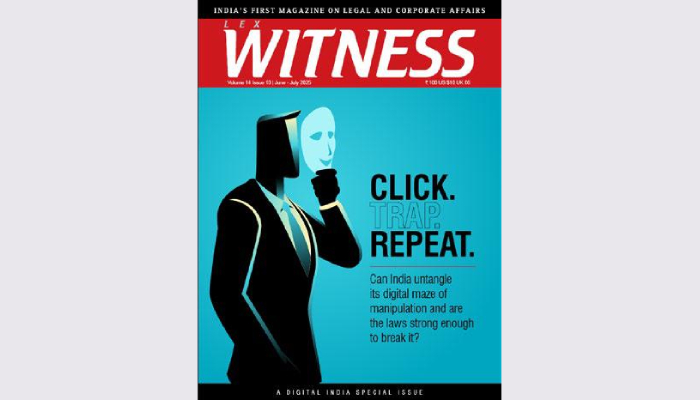
or

On the 4th of October, 2018, the Hon’ble Supreme Court delivered a landmark judgment in the matter of Arcelor Mittal India Pvt. Ltd. v. Satish Kumar Gupta & Ors., on the controversial Section 29A of the Insolvency & Bankruptcy Code (‘IBC’), holding it as valid and binding, and allowing for a wide net to be cast by it on persons responsible for the functioning of a corporate debtor, or persons acting jointly with such persons, as ineligible to submit a Resolution Plan when they fall within any of the disqualification criteria under Section. 29A of the IBC. With specific reference to Section. 29A(c), it was held that such persons as mentioned above, are ineligible to submit a resolution plan if they have a Non-performing asset (NPA) that remains unpaid for a period of one year before the commencement of CIRP. It was emphasized that such ineligibility is only curable if, before the submission of a Resolution Plan, the NPA amounts are cleared by the ineligible persons, according to the first proviso to Section 29A(c).
The judgment, authored by Justice Nariman, interprets Section 29A as per the standard of ‘creative interpretation’ defined in the 2017 judgment of Eera v. State1, which looks at the literal language along with the object of statute. The judgment highlights that the language in Section 29A is much wider, weighs more significantly than in the 2017 Ordinance2, which entails implicating an intention to rope in all persons acting in concert with the person submitting a resolution plan.
Section 29A is referred to as a ‘see-through provision’ that allows the statute itself to lift the Corporate Veil. Justice Nariman refers to the doctrine of ‘piercing the corporate veil’, stating it as an exception to the principle of the separate legal entity in Salomon v. Salomon3. The Court also refers to the Indian case of LIC v. Escorts4, wherein the court held that the corporate veil may be pierced where the protection of public interest is of paramount importance, or where the company has been formed to evade the obligations imposed by the law.
The judgment lays down that the opening statements of Section 29A subtly hints that ineligibility attaches when the resolution plan is submitted by a resolution applicant. It is clarified that the date of commencement of the CIRP is only relevant for Section 29A(c), for calculating whether one year has lapsed from the date of NPA classification. This timeline is differentiated from the antecedent time-period referred to in sub-clauses (d) and (g) of S. 29A, relating to the conviction of offences and indulging in transactions that are inter alia preferential, fraudulent or undervalued.
The judgment clarifies that the ineligibility under Section 29A(c) is remedial by payment of overdue NPA amounts with interest thereon, before the submission of a resolution plan, in terms of the first proviso to Section 29A(c). This holding firmly rejects the argument that the requirement makes the resolution plan a speculative bid contingent on the clearance of NPAs, which would make it commercially unworkable, considerably narrowing the pool of resolution applicants. The judgment reasons that the ability to acquire a Corporate Debtor at a haircut may make it worthwhile for a resolution applicant to pay off the NPA amounts. The judgment emphasizes that great care must be taken to see that such ineligible persons do not evade proviso to Section 29A(c) by any means and ensure payment of NPA amounts. It is held that antecedent facts that are reasonably proximate to the time of submission of the resolution plan can be considered for this purpose.
Sticking to a literal and purposive interpretation, the judgment ascertains whether certain persons have got together and are acting “jointly” in the sense of acting together. For arriving at the interpretation of “in concert”, the judgment refers to the SEBI Takeover Code Regulations of 1994, 1997 and 20115, and the Bhagwati Committee Report on Takeovers. It is highlighted that wherever persons acting jointly or in concert with the person who submits a resolution plan, all such persons are covered under Section. 29A. The judgment relies on Technip v. SMS Holding6 and Daiichi v. Jayaram7 to reckon that conduct, common interest, experience, and common sense indicate that those involved have some form of direct or indirect understanding, and are acting in cooperation with each other.
The judgment clarifies that management refers to de jure management which ordinarily vests in the Board of Directors, and would include manager, managing director, and officer as defined under the Companies Act, 2013. Referring to the definition of ‘control’ in the Companies Act, 2013, the judgment clarifies that control can be exercised de jure as a right to appoint majority directors of the company, as also de facto through which the management or policy decisions of a company can be influenced. It is clarified that reference is only to ‘positive’ control and that any power to block resolutions in a company does not amount to control. Referring to the enumeration of a Promoter as given in the Companies Act, it is defined as de facto when there is direct or indirect control over the affairs of a company, or when the person advises, directs or instructs the Board to act; and de jure control, where a promoter is expressly named in a prospectus or identified in the annual returns of a company.
The judgment makes clear that the NCLT, i.e., the Adjudicating Authority under the IBC has to act only when the Resolution Plan is placed for its consideration under Section 31 of the IBC. This is after the Resolution Professional has examined the plan to see if it is complete in all respects and conforms to the requirements of Section 30(2), and the Committee of Creditors (‘CoC’) has approved it by a vote of not less than 66% as per Section 30(4). The Resolution Professional is only to give his prima facie opinion as it is the CoC that approves or rejects a Resolution Plan where the Resolution Applicant is ineligible under Section 29A. While the CoC may approve or reject a Resolution Plan, this decision is not final, and it is the NCLT, which finally approves or rejects a Resolution Plan. The judgment clarifies that there can be no challenge where the Resolution Professional turns down a Resolution Plan at the threshold for its failure to comply with Section 30(2) of the IBC – There is also no scope for a writ petition since no right is infringed at this stage. The judgment has restricted the jurisdiction of the NCLT under Section 60(5) of the IBC to entertain applications only at the stage when the determination on a Resolution Plan is to be made. Treatment of the Resolution Applicants
The judgment concluded that the Resolution Applicants for selling or transferring shares linked to the persons who are ineligible under Section.29A who are in or under the positive control or management or are promoters of a Corporate Debtor, or are “acting jointly” within the meaning of Section. 29A with such ineligible persons. The judgment stresses that the ineligibility under Section.29A(c) can only be cured if the NPA accounts of such ineligible persons are mandatorily paid off as per the first proviso to Section. 29A(c). If a Resolution Applicant adopts any means other than payment of NPA amounts, the Court will lift the corporate veil of the Resolution Applicant to determine such ineligibility. The Supreme Court dismissed arguments in respect of sub-clause (i) of Section 29A, relating to a disqualification attached to an order of an authority for unfair dealings in the securities market. The Court noted that a prohibitory sanction by an authority situated outside India for political reasons would not be covered by sub-clause (i) of Section. 29A.
Finally, the Apex Court resorts to its inherent powers under Article 142 of the Constitution to do complete justice on account of the fact that the CoC represented their interest in considering the Resolution Plans before them so that the Corporate Debtor is not liquidated. Justice Nariman also gave due consideration to the fact that the provision under Section 29A of the IBC is laid down for the first time by the Supreme Court. Thus, using its inherent powers under Article 142, the Supreme Court gave the Resolution Applicants one more opportunity to pay off their NPAs within two weeks’ time in accordance with the proviso to S. 29A(c), and a further period of 8 weeks to the CoC to accept a Resolution Plan by the requisite majority, failing which, the Corporate Debtor shall go into liquidation.
Ashu Kansal is a Partner at Adhita Advisors, having more than fifteen years of experience. His main areas of expertise are banking and finance laws, securitization - related matters, recovery of debts, suits, and arbitration matters. Apart from drafting various pleadings, he also advises/ gives opinions and strategies to clients on various litigation matters in various forums including the Supreme Court, High Courts and various other Tribunals across the Country. He has also briefed top Senior Counsels across the country for multinational clients.

Gunjan Bhatter

Lex Witness Bureau

Lex Witness Bureau

For over 10 years, since its inception in 2009 as a monthly, Lex Witness has become India’s most credible platform for the legal luminaries to opine, comment and share their views. more...
Connect Us:


The Grand Masters - A Corporate Counsel Legal Best Practices Summit Series
www.grandmasters.in | 8 Years & Counting
The Real Estate & Construction Legal Summit
www.rcls.in | 8 Years & Counting
The Information Technology Legal Summit
www.itlegalsummit.com | 8 Years & Counting
The Banking & Finance Legal Summit
www.bfls.in | 8 Years & Counting
The Media, Advertising and Entertainment Legal Summit
www.maels.in | 8 Years & Counting
The Pharma Legal & Compliance Summit
www.plcs.co.in | 8 Years & Counting
We at Lex Witness strategically assist firms in reaching out to the relevant audience sets through various knowledge sharing initiatives. Here are some more info decks for you to know us better.
Copyright © 2020 Lex Witness - India's 1st Magazine on Legal & Corporate Affairs Rights of Admission Reserved